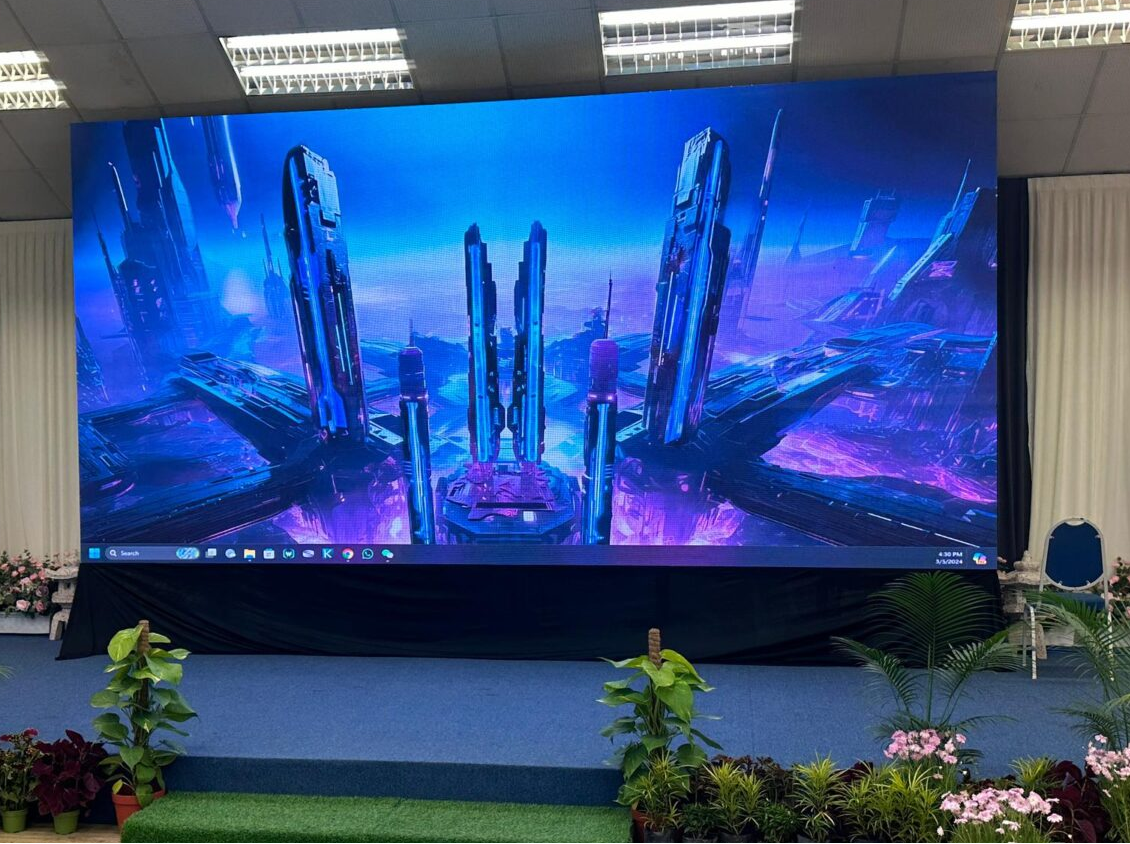When we go shopping in shopping malls, we may often see one or more large display screens installed in some windows or walls in the store to display brand promotion, product activities, information announcements, etc. Among them, LCD splicing screen and LED display screen are two more commonly used products. Some customers don’t know which one to choose when decorating and designing?
Generally speaking, LCD splicing screen and LED display screen have their own advantages and disadvantages, such as display effect, visual experience, product price, etc. We can choose according to our actual use, as follows:

1. Flexibility of size
The customization capability of LCD splicing screen in size and shape is relatively weak. The conventional sizes are 46 inches, 49 inches, 55 inches, and 65 inches. They are spliced into a large screen for use. Since the size of a single screen is relatively large, the splicing shape is relatively simple, and the installation and transportation are also relatively complicated.
LED display screens can be customized in different sizes and shapes as needed. The size of the module is very small and can cover the entire wall, providing an immersive viewing experience. This flexibility enables it to adapt to shopping malls and stores of various sizes and shapes.
2. Resolution and clarity
In this regard, LCD technology has more advantages. For example, the resolution of a single screen reaches 1920*1080. Through splicing, a higher resolution can be achieved, and the picture display is clearer and more delicate.
Due to the size of the dot pitch, the clarity of the LED display screen is still a certain distance compared with the LCD splicing screen. The specifications commonly used in shopping malls and stores are P1.25, P1.53, P1.86, P2, etc. Under normal circumstances, the smaller the dot pitch, the higher the screen resolution and the clearer the picture display, but its price is also higher.
3. Color expression
Although the LCD splicing screen has good display effects, it is not as good as the small-pitch series LED display screen in color saturation and contrast.
LED display screens usually have higher contrast and brighter colors, which makes them more vivid and realistic when displaying images and videos. This richness of color is important for meetings that need to display high-quality visual content.
4. Brightness adjustment ability
The brightness of the LCD splicing screen is usually relatively fixed, generally in the range of 500-800cd/square meter, which is suitable for indoor environments in shopping malls and stores. If it is in an environment with strong light, it may affect the display effect.
The brightness of the LED display screen is very high and can be adjusted according to the ambient light, which allows it to maintain good display effects under different lighting conditions. This flexibility is important for shopping malls and stores that need to display under natural light.
5. Seamless splicing visual effect
Since each LCD splicing screen has a border, the effect of splicing will be produced after the splicing, which will affect the customer’s viewing experience to a certain extent.
LED display screens can form a seamless whole after splicing, which enables them to provide a smoother and more coherent visual effect when displaying content. In this regard, LED display screens have more advantages.
6. Diversity of shapes
LCD splicing screens are mainly installed in a flat form, and the choice of shapes is relatively limited.
In addition to the conventional hard module installation, LED display screens can be spliced through soft modules to easily realize non-traditional shapes such as curved screens to meet specific design requirements. This flexibility makes it more advantageous in conference rooms that require special-shaped screens.
In general, both LCD splicing screens and LED display screens can be used in shopping malls and stores. The specific choice should be determined based on the on-site conditions, display requirements, and financial budget.

